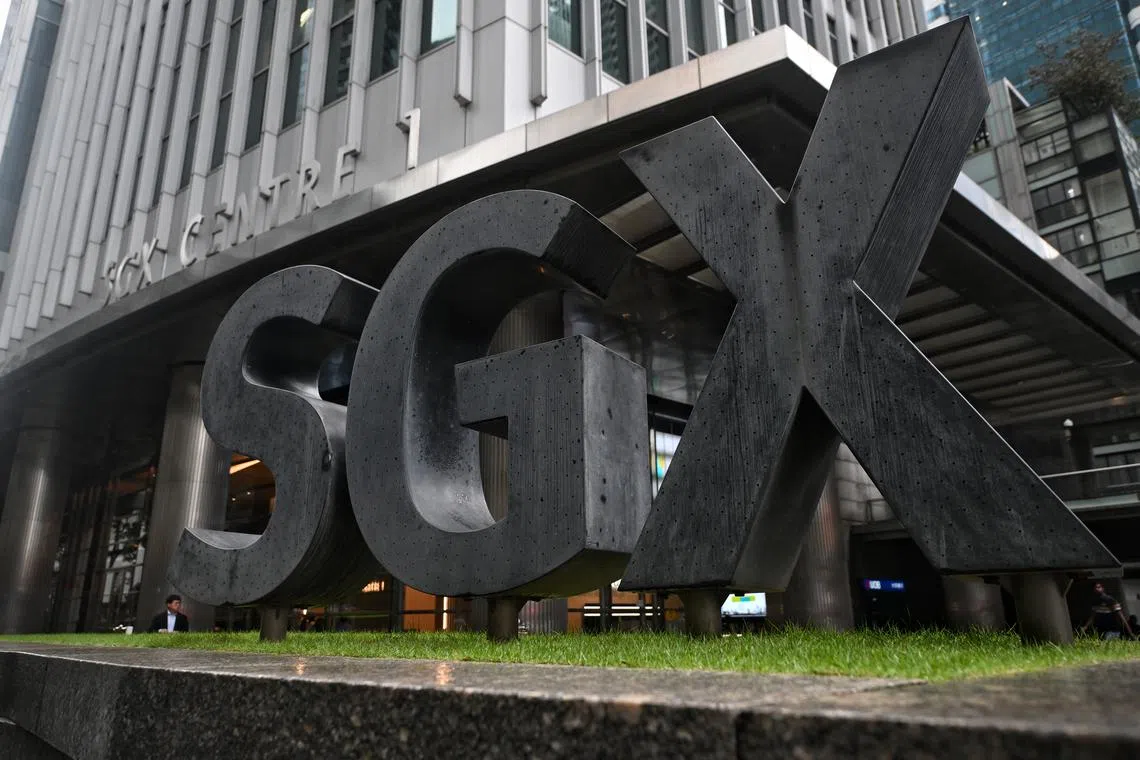STI closes flat on consolidation despite strong Wall St performance
Sign up now: Get ST's newsletters delivered to your inbox

The closing bell here left 18 STI constituents in the red while three were unchanged.
PHOTO: ST FILE
Tay Peck Gek
Follow topic:
SINGAPORE – Red ink was the order of the day on Thursday, but local shares managed to claw their way back to end the trading session more or less where they started.
The lacklustre effort came despite another robust performance on Wall Street overnight, where signs of a cooling economy raised the real prospect of a soft landing in the United States.
Shares took the hint, with the S&P 500 up 0.2 per cent while the tech-heavy Nasdaq added 0.1 per cent and the Dow Jones rose 0.5 per cent.
The increases failed to stir local investors, who left the Straits Times Index (STI) flat with a barely perceptible rise of 0.93 points, or 0.03 per cent, to 3,133.05 points.
Gainers undershot decliners 282 to 315, with 1.3 billion securities worth $982.1 million transacted.
SPI Asset Management managing partner Stephen Innes noted that Asian shares had recovered from earlier losses in the day while European stock futures recorded a subdued opening, amid concerns that the markets had jumped too far over their skis.
The concern is that markets are now overestimating the chances of full-on US Federal Reserve policy accommodation, Mr Innes added.
The closing bell here left 18 STI constituents in the red, while three were unchanged.
Singapore Airlines (SIA) closed at $6.22, up 0.3 per cent for the day, after the national carrier reported a 24.5 per cent year-on-year increase in passenger traffic in October, amid robust business across all its route regions.
However, its passenger load was 87.4 per cent in October, down 0.3 percentage points from September’s 87.7 per cent.
iFast’s closing price reached a 52-week high at $7.73, up 0.4 per cent, following a three-week climb since it reported a 308 per cent surge in its third-quarter profit in late October.
Shareholders can look forward to more generous dividend payouts in tandem with expected “substantially” higher revenue and profits, its chief executive noted in October. THE BUSINESS TIMES

